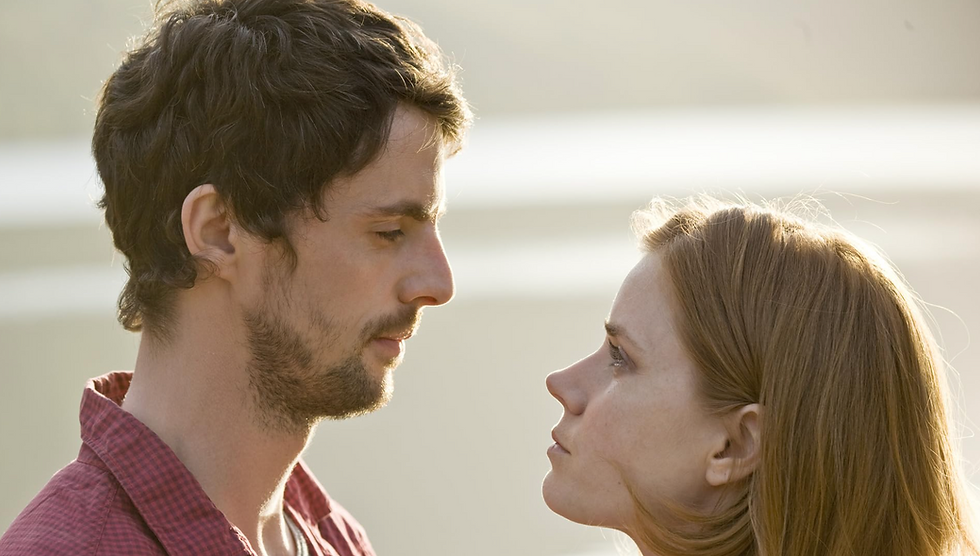- Julie Barris | Crisis Counselor | Therapist-in-Training

- Oct 7
For anyone feeling stuck, overwhelmed, or unsure where to begin, exploring why therapy helps can be the first step toward reclaiming clarity, connection, and a deeper sense of self.

You’ve probably thought about therapy before. Maybe someone recommended it. Maybe you’ve stared at a counseling website once or twice. Maybe you’ve caught yourself saying, “Other people have it worse—I should be able to handle this on my own.”
Here’s the truth: you don’t need a breakdown to deserve support. Therapy isn’t just for people in crisis. It’s for people who’ve been holding it all together for so long, they’ve forgotten what it feels like to breathe freely. If you’ve been on the fence about starting therapy, you’re not alone. But here are a few real reasons why it can help—even if your life “looks fine” on the outside.
Therapy Gives You a Space to Be Fully Honest—Even With Yourself
Most of us are very good at performing “okay.” We’ve learned how to put on the smile, go to work, show up for others—even when we’re quietly unraveling inside. But behind the “I’m fine,” there’s often exhaustion, resentment, grief, or confusion that’s gone unspoken for years.
Therapy offers a rare kind of space: one where you don’t have to perform. You can show up exactly as you are. No filter. No fixing. No shame. Just real conversations with someone who’s trained to hold it all. You’re not too much. You’re just human—and maybe a little tired of pretending otherwise.
You Start to See Patterns You Couldn’t See Alone
You’re not broken—you’re processing. And sometimes, therapy helps you see what’s really underneath the surface: why you always feel like you’re “too sensitive,” why certain relationships leave you drained, or why you react the way you do, even when you don’t want to.
Together, you start connecting dots. You look at your emotional patterns—not to blame, but to understand. And because understanding creates space for choice, this kind of awareness becomes the foundation for real, lasting change.
You Learn Emotional Tools That Actually Work
You weren’t born knowing how to set boundaries, regulate your nervous system, or move through anxiety. Most of us never learned these things. Therapy offers space to finally slow down, understand what’s happening beneath the surface, and build real-life tools to navigate it all.
In many therapy spaces—including practices like Moody Melon Counseling—there’s a strong focus on helping you develop emotional skills with warmth, clarity, and zero judgment. You’re not expected to know how to do it all already. You’re here to learn—and unlearn—with support.
It’s Not Weakness. It’s Capacity-Building.
There’s still a myth out there that asking for help means something is wrong with you. But here’s what therapists see all the time: the strongest thing you can do is let yourself be seen. To say, “I want better, even if it means doing something unfamiliar.” To show up, week after week, and say, “This matters. I matter.”
Therapy helps you reclaim that strength—not by pretending you’re okay, but by making space for all the parts of you, even the messy ones. It doesn’t ask you to change overnight. It invites you to come back to yourself, one truth at a time.
It’s Different Than Talking to a Friend (And That’s a Good Thing)
Friends are incredible. But they’re not therapists. A friend might offer advice or try to make it better. A therapist offers something else: space, structure, deep listening, and a relationship that’s 100% about you, your healing, and your growth.
Good therapy is collaborative, curious, and deeply human. It’s not about fixing you. It’s about helping you reconnect with your own wisdom—and offering guidance as you make your way forward.
Final Thoughts
You don’t have to wait until it gets worse. You don’t have to justify your pain. You don’t have to handle it all alone. Therapy won’t change the past. But it can change your relationship to it—and to yourself. And sometimes, that’s enough to open up everything.
So if you gave yourself just one hour a week to stop performing and start exploring—what might finally begin to shift?
💬 Ready to start your own healing journey?
Book a session with one of our compassionate therapists at Moody Melon Counseling. We’re here when you’re ready. 🍉





